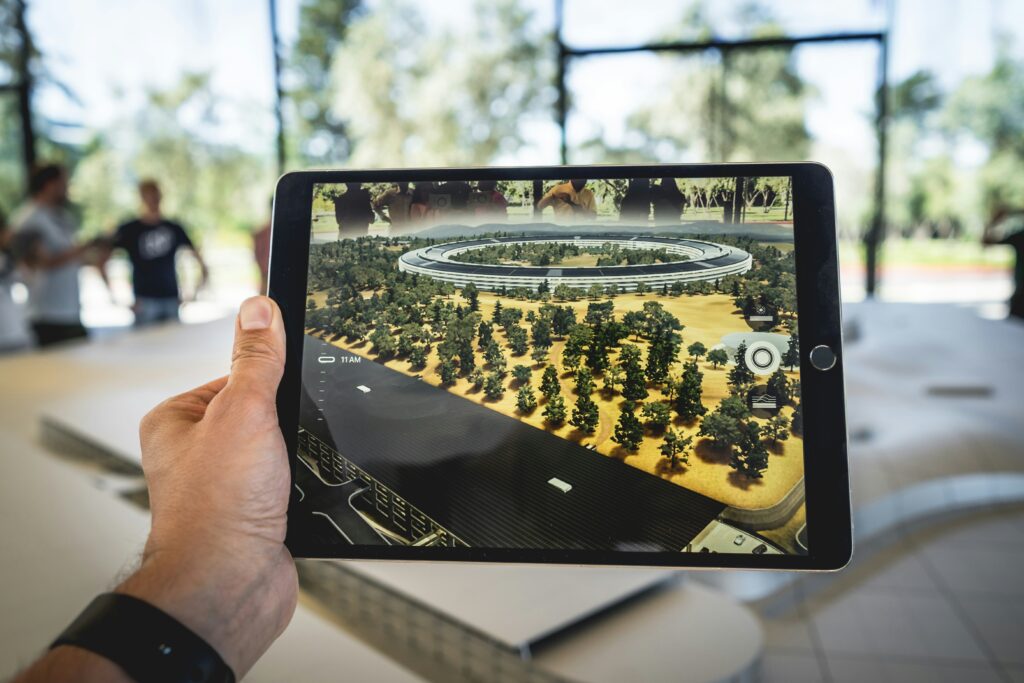Introduction to AR in Education
Augmented Reality (AR) is transforming traditional educational approaches by merging digital content with real-world environments. In this comprehensive guide, we delve into the multifaceted realm of AR and its profound impact on education and training.
Augmented Reality (AR) has emerged as a groundbreaking technology that seamlessly blends digital elements with the physical world, creating immersive and interactive experiences. Unlike Virtual Reality (VR), which immerses users in entirely digital environments, AR enhances the real world by overlaying digital information, such as images, videos, or 3D models, onto the user’s view of the physical environment. This integration of virtual and real-world elements opens up a myriad of possibilities in various fields, including education and training.
Understanding Augmented Reality
At its core, AR technology leverages sensors, cameras, and display devices to superimpose digital content onto the physical environment in real-time. This is typically achieved through smartphones, tablets, or specialized AR glasses, which serve as the primary interface for users to interact with augmented content. By blending virtual objects seamlessly with the real world, AR creates immersive experiences that enhance learning and engagement.
Benefits of AR in Education
The integration of AR technology in education offers a host of benefits that revolutionize the learning experience. Firstly, AR enhances student engagement by providing interactive and hands-on learning opportunities. Students can explore complex concepts in a tangible way, fostering deeper understanding and retention of information. Additionally, AR promotes active learning by encouraging students to interact with digital content, rather than passively consuming information. This participatory approach stimulates curiosity and creativity, leading to more meaningful learning outcomes. Moreover, AR facilitates personalized learning experiences, allowing educators to tailor content to individual student needs and learning styles. By adapting the pace and difficulty level of lessons, AR enables students to learn at their own pace, promoting inclusivity and accessibility.
Examples of AR in Education
The applications of AR in education are vast and diverse, spanning various subjects and grade levels. In science education, AR can bring abstract concepts to life by visualizing complex phenomena, such as cellular structures or planetary orbits. For example, apps like Anatomy 4D enable students to explore the human body in 3D, providing interactive tours of anatomical structures. In history and social studies, AR can transport students to different time periods and historical events, allowing them to witness key moments firsthand. The app “WW1 Augmented Reality” overlays historical photos and documents onto real-world locations, offering a unique perspective on World War I. Additionally, AR can revolutionize language learning by immersing students in virtual environments where they can practice language skills in context. Apps like “Word Lens” translate text in real-time, enabling learners to interact with foreign languages in their everyday surroundings.
AR in Training and Skill Development
Beyond education, AR technology is also revolutionizing training and skill development in various industries. In corporate training, AR simulations enable employees to practice real-world tasks in a risk-free virtual environment. For example, companies in the manufacturing sector use AR to train workers on equipment operation and maintenance procedures. By overlaying digital instructions and visual cues onto physical machinery, AR guides employees through complex tasks, reducing the risk of errors and accidents. Similarly, healthcare professionals benefit from AR simulations that simulate surgical procedures and medical scenarios. By practicing surgical techniques in a virtual environment, surgeons can hone their skills and improve patient outcomes.
Implementing AR in Education and Training
While the potential of AR in education and training is vast, its successful implementation requires careful planning and consideration. Educators and trainers must first identify learning objectives and determine how AR can enhance the learning experience. Additionally, selecting the right AR tools and platforms is essential, as different applications offer varying features and functionalities. Educators can explore existing AR apps and platforms or collaborate with developers to create custom content tailored to their specific needs. Furthermore, integrating AR into the curriculum requires adequate training and support for both educators and students. By providing comprehensive training and resources, educational institutions can ensure that teachers are proficient in using AR technology and that students can maximize its benefits. Finally, ongoing assessment and evaluation are crucial to measuring the effectiveness of AR implementation and identifying areas for improvement. By collecting feedback from students and educators, institutions can refine their AR strategies and enhance the overall learning experience.
Embracing AR for Enhanced Learning
In conclusion, Augmented Reality (AR) holds immense potential to revolutionize education and training, offering immersive, interactive, and personalized learning experiences. By leveraging AR technology, educators and trainers can engage students in dynamic and meaningful ways, fostering deeper understanding and retention of information. Moreover, AR empowers learners to explore complex concepts, develop essential skills, and prepare for real-world challenges. As AR continues to evolve and expand its capabilities, its integration into education and training will undoubtedly shape the future of learning. By embracing AR technology and harnessing its transformative power, we can unlock new possibilities for knowledge acquisition, skill development, and lifelong learning.
Share via:


